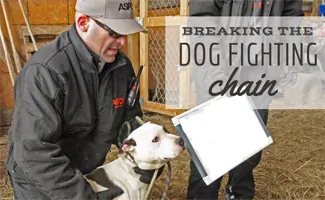When you purchase through links on our site, we may earn a commission. Here’s how it works.

There is a lot of good being done to stop animal cruelty, but there are also those who are willing to turn a blind eye to animal testing when it comes to their cosmetics or look the other way when they see animal abuse. Learn more animal cruelty facts so you are empowered to fight for change.
Animal Abuse Statistics
The question that usually comes up is, Why do humans abuse animals?
The sad truth of the matter is that there is no targeted reason people do what they do. Instead of treating animals like they are living creatures with emotions and feelings, some people view them like throw-away “things” that are put here for their pleasure. Animal abuse is not isolated to any specific gender, race, or demographic.
- 5% of animal abuse cases involve dogs.
- Many states do not consider livestock in their cruelty laws.
- Federal cruelty laws are limited when it comes to animals. Instead, most cases are handled on a state by state basis.
Animal Testing Statistics
Animal testing is another area that people are quick to dismiss. We see makeup companies conduct testing on animals, and we think they are putting lipstick on monkeys – how much harm does that cause, right? The truth is, animal testing is a much more cruel and inhumane practice that kills or seriously injures many types of species. Animal testing results in helpless creatures being burned, crippled, poisoned or even sometimes killed.
- There is no truth to the idea that the U.S. Government requires cosmetic testing on animals.
- It’s not just rats used in product testing. Rabbits, mice, birds, amphibians, as well as dogs and cats, can all be test subjects.
- 66,000 dogs and 21,000 cats are subjected to testing every year.
- It’s not just makeup. Testing includes subjecting animals to pharmaceutical drugs, carcinogens and even killing pregnant animals and conducting tests on fetuses.
Animal Rights Facts
Animal rights vary from state to state, but they all reflect similar principles. Animal rights extend beyond dogs and cats and include animals such as livestock and some wild creatures. It’s always touchy when it comes to animals raised as a food source or hunting versus animal rights, but there is a clear set of rules that protects animals’ rights both at home and in the wild.
- Hunting is legal in all 50 states, but some rules and regulations prohibit over-hunting and the preservation of native species.
- The Animal Welfare Act was signed into U.S. law in 1966. It regulates the treatment of animals in research, exhibition, and transportation.
What Animal Cruelty Laws Are There?
Like animal rights laws, cruelty laws vary depending on what state you’re in. According to the American Humane Society, “Anti-cruelty laws exist in all U.S. states and territories to prohibit unnecessary killing, mutilating, torturing, beating, neglecting and abandoning animals, or depriving them of proper food, water or shelter.”
- In October 2019, the House unanimously passed the Preventing Animal Cruelty and Torture (PACT) Act. This new law criminalizes acts of animal cruelty associated with interstate commerce and federal property. The Senate and President are expected to sign it into law in the coming weeks. PACT will not override local animal cruelty laws or enforcement.
- All 50 states consider animal cruelty a felony in one form or another.
- Laws include neglect, physical abuse and unlivable housing conditions.
- 43 of 50 states have a zero-tolerance policy, and would convict someone on a first-time offense.
For a more detailed list of more recent state and national animal cruelty laws, visit ASPCA. And, here is a ranking of the best and worst states when it comes to animal cruelty law, as reported by The Animal Legal Defense Fund.
How to Report Animal Abuse
Animal abuse is an epidemic that is not going away without people doing the right thing and speaking up. The only way we can start to correct the problem is by deciding to take a stand and let people know that it’s not OK to mistreat or neglect animals. If you suspect a neighbor is abusing their dog, start by offering to take it on walks or to the park. This way, you can subtly communicate that the owner is doing something wrong without accusing them. If they don’t take the hint, then there are other options for helping the pet out of harm’s way.
- If an animal is in immediate danger, contact your local police department and report the situation.
- In a dangerous situation, you can also contact PETA (757-622-7382, option 2) to report the case. There, you can discuss what information you have and help determine the best path forward.
- If you see something, speak up! Animals need strong people to have a voice for them and to tell people the abuse needs to stop.
Watch the video below for more information about how to report the abuse of living creatures.
What are you doing to make a difference for cruelty against animals?
Tagged With: Emergency

